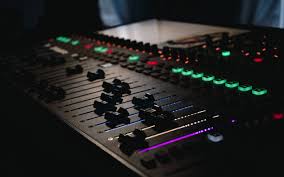Mix Leveling

Mixing levels for professional music compositions can vary depending on the genre, style, and personal preference of the producer or mixing engineer. However, there are some general guidelines and recommended levels that can serve as a good starting point. These levels are typically measured in decibels (dB) using audio meters in digital audio workstations (DAWs) or external hardware meters.
Here are some common mixing level recommendations for different elements of a music composition:
Peak Levels:
Keep peak levels well below 0 dBFS (decibels relative to full scale) to avoid clipping and distortion. It's advisable to aim for peak levels around -3 dBFS to -6 dBFS to provide headroom for mastering.
Kick Drum:
Peak levels for kick drums often range from -6 dBFS to -3 dBFS. This allows the kick to punch through the mix without overpowering other elements.
Snare Drum:
Peak levels for snares can be similar to kick drums, around -6 dBFS to -3 dBFS. Adjust depending on the style and intensity of the track.
Bass:
Bass levels can vary greatly depending on the genre. Aim for peak levels between -6 dBFS to -3 dBFS. The bass should be prominent but not overwhelming.
Vocals:
Lead vocals should typically peak between -6 dBFS to -3 dBFS. Background vocals and harmonies can be slightly lower, around -9 dBFS to -6 dBFS.
Guitars/Keyboards:
Rhythm guitars and keyboards can peak around -9 dBFS to -6 dBFS. Adjust based on their role in the mix and the density of the arrangement.
Hi-Hats and Cymbals:
These elements can peak around -12 dBFS to -9 dBFS to avoid harshness and maintain clarity.
Overall Mix:
Aim for an average RMS (Root Mean Square) level of around -14 dBFS to -10 dBFS for the entire mix. This range provides sufficient headroom for mastering while ensuring a balanced sound. It's important to note that these levels are starting points and should be adjusted based on the specific characteristics of each track and the overall mix. Use your ears as the ultimate guide – levels can vary greatly depending on the dynamic range and complexity of the music. Additionally, consider using compression, EQ, and other mixing techniques to achieve a polished and balanced sound.
Here are some common mixing level recommendations for different elements of a music composition:
Peak Levels:
Keep peak levels well below 0 dBFS (decibels relative to full scale) to avoid clipping and distortion. It's advisable to aim for peak levels around -3 dBFS to -6 dBFS to provide headroom for mastering.
Kick Drum:
Peak levels for kick drums often range from -6 dBFS to -3 dBFS. This allows the kick to punch through the mix without overpowering other elements.
Snare Drum:
Peak levels for snares can be similar to kick drums, around -6 dBFS to -3 dBFS. Adjust depending on the style and intensity of the track.
Bass:
Bass levels can vary greatly depending on the genre. Aim for peak levels between -6 dBFS to -3 dBFS. The bass should be prominent but not overwhelming.
Vocals:
Lead vocals should typically peak between -6 dBFS to -3 dBFS. Background vocals and harmonies can be slightly lower, around -9 dBFS to -6 dBFS.
Guitars/Keyboards:
Rhythm guitars and keyboards can peak around -9 dBFS to -6 dBFS. Adjust based on their role in the mix and the density of the arrangement.
Hi-Hats and Cymbals:
These elements can peak around -12 dBFS to -9 dBFS to avoid harshness and maintain clarity.
Overall Mix:
Aim for an average RMS (Root Mean Square) level of around -14 dBFS to -10 dBFS for the entire mix. This range provides sufficient headroom for mastering while ensuring a balanced sound. It's important to note that these levels are starting points and should be adjusted based on the specific characteristics of each track and the overall mix. Use your ears as the ultimate guide – levels can vary greatly depending on the dynamic range and complexity of the music. Additionally, consider using compression, EQ, and other mixing techniques to achieve a polished and balanced sound.
